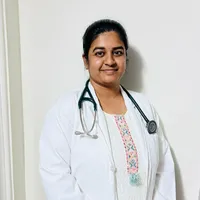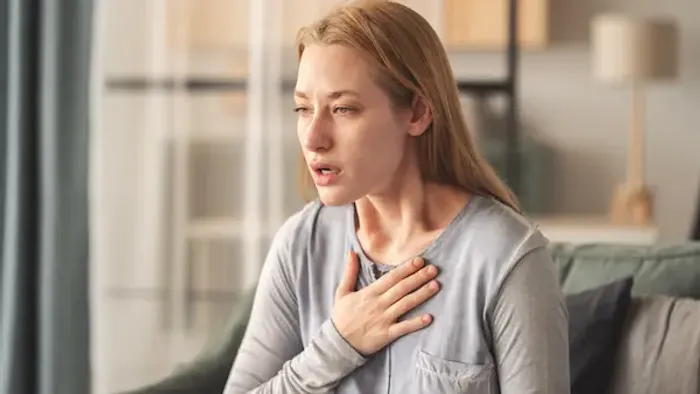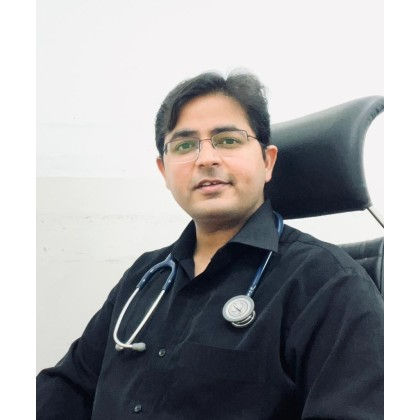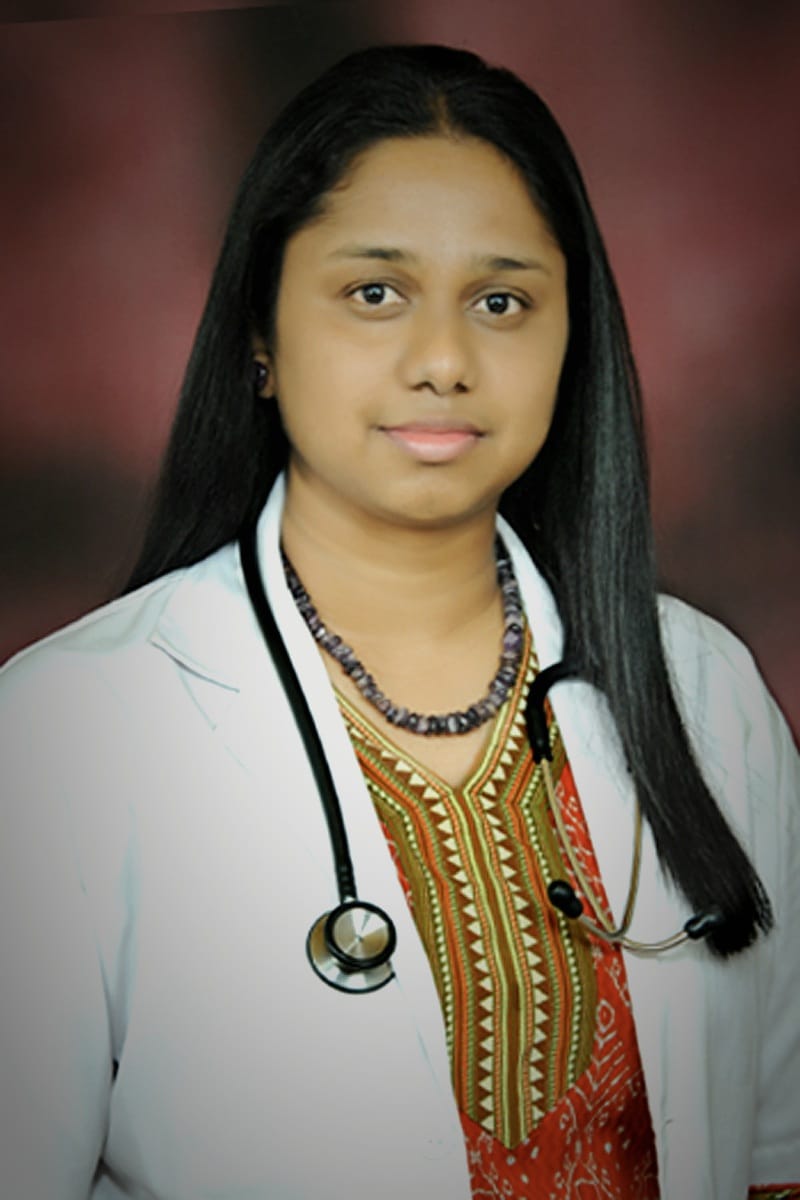Guide to Dyspnea Reasons For Shortness Of Breath
Learn about dyspnoea (shortness of breath), its common causes, diagnostic tests, and treatments. This guide covers lung, heart, blood, and lifestyle factors, plus self-care, recovery tips, and when to seek urgent medical help.

Written by Dr. Siri Nallapu
Reviewed by Dr. Rohinipriyanka Pondugula MBBS
Last updated on 28th Oct, 2025

Introduction
Shortness of breath, or dyspnoea, can arise from mild, temporary issues or signal serious illness that requires prompt attention.
Shortness of breath—known medically as dyspnoea—can be unsettling, whether it appears during exertion or suddenly at rest. Sometimes it’s harmless and short-lived; other times, it indicates a medical condition that needs evaluation. This guide explores the common reasons behind breathlessness, how doctors identify the cause, and practical steps to help you breathe easier. We’ll cover lung and heart conditions, emergencies, self-help breathing techniques, and prevention strategies, including post-viral and long COVID recovery. If symptoms last longer than two weeks, consult a doctor online with Apollo 24|7 for professional assessment.
What Is Dyspnoea?
Dyspnoea describes the uncomfortable or difficult sensation of breathing experienced by the individual.
Dyspnoea is the feeling of breathing effort or discomfort, often described as tightness in the chest or “air hunger”. It
may develop suddenly (acute) or gradually (chronic).
Acute breathlessness is often linked to asthma attacks, infections, allergic reactions, pulmonary embolism, or heart
problems. Chronic breathlessness may relate to long-term conditions such as COPD, interstitial lung disease, heart
failure, anaemia, or anxiety.
Consult a Top Pulmonologist for Personalised Advice
Doctors often use a “pump, pipes, blood” framework:
- Pump: the heart’s ability to circulate blood.
- Pipes: the lungs and airways that move oxygen.
- Blood: the red cells that carry oxygen throughout the body.
Recognising patterns—such as breathlessness lying flat (heart failure) or wheezing during pollen season (asthma)—helps pinpoint the cause.
When Is Shortness of Breath an Emergency?
Certain symptoms accompanying breathlessness signal a medical emergency.
Seek urgent help if breathlessness is:
- Sudden or severe, especially with chest pain, sweating, or nausea.
- Associated with blue lips or face, inability to speak full sentences, or severe wheezing.
- Linked with fainting, confusion, or oxygen levels below 90% at rest.
- Accompanied by coughing pink, frothy sputum, or sharp one-sided chest pain.
- Present with leg swelling and sudden breathlessness (possible clot).
- Combined with high fever or shaking chills.
- Occurring during a severe allergic reaction with throat swelling or hives.
While waiting for emergency care, sit upright and use prescribed inhalers or nitroglycerin if appropriate. For milder symptoms that persist beyond two weeks, book an online consultation with Apollo 24|7.
Lung-Related Reasons You Might Feel Breathless
Conditions affecting the lungs and airways are among the most frequent causes of dyspnoea.
Asthma and Wheezing
Asthma causes inflammation and narrowing of the airways, leading to wheezing, chest tightness, and difficulty
breathing, often triggered by allergens, cold air, or exercise. Night-time cough and early-morning symptoms are typical.
Inhaled medicines reduce attacks and improve control.
Chronic Obstructive Pulmonary Disease (COPD)
COPD, often linked to smoking, damages air sacs and bronchi, making it difficult to exhale. Common signs include
exertional breathlessness, chronic cough, and frequent chest infections. Inhalers, pulmonary rehabilitation, and
vaccinations help manage symptoms. Quitting smoking remains the most effective intervention.
Pneumonia, Bronchitis, and Infections
Infections inflame the lungs, reducing oxygen exchange and causing fever, cough, and shortness of breath. Post-viral
breathlessness, including after COVID-19, may persist as lungs recover.
Pulmonary Embolism and Pneumothorax
A pulmonary embolism (blood clot in the lungs) or a pneumothorax (collapsed lung) can cause sudden, severe
breathlessness and chest pain. Both require emergency medical attention.
Heart-Related Reasons Behind Dyspnoea
The heart and lungs function together—heart problems can directly cause breathlessness.
Heart Failure
Heart failure occurs when the heart cannot pump blood efficiently, causing fluid buildup in the lungs. Typical symptoms
include breathlessness during exertion, while lying flat, or waking at night gasping for air. Treatment includes medicines
to reduce fluid, improve heart function, and support circulation.
Heart Attack, Arrhythmias, and Valve Disease
- Heart attack: Breathlessness may accompany or replace chest pain, especially in women and older adults.
- Arrhythmias: Irregular heart rhythms can lower cardiac output, leading to fatigue and dyspnoea.
- Valve disease: Narrowed or leaking heart valves strain the heart and cause progressive shortness of breath.
Other Common Reasons: Blood, Metabolic, and Lifestyle Factors
Breathlessness can also stem from problems unrelated to the lungs or heart.
Anaemia and Thyroid Disorders
Low haemoglobin reduces oxygen delivery to tissues, causing fatigue and exertional breathlessness. Thyroid disorders
can also affect breathing by altering metabolism and heart rate. Home blood tests for anaemia and thyroid profiles are
available through Apollo 24|7.
Anxiety, Panic, and Breathing Patterns
Anxiety and panic attacks can cause rapid, shallow breathing and a sense of air hunger. Techniques such as diaphragmatic and paced breathing help manage symptoms. Persistent cases may benefit from therapy or medication.
Obesity, Deconditioning, Reflux, and Environmental Factors
Excess weight increases breathing effort; lack of fitness worsens exertional breathlessness. Acid reflux, high altitude, or
air pollution can also trigger symptoms. Gradual exercise and air-quality awareness can reduce episodes.
Special Situations: Children, Older Adults, and Pregnancy
Different life stages have distinct causes and warning signs for breathlessness.
Children
Common causes include viral infections, asthma, allergies, or inhaled foreign objects. Seek urgent help if the child shows chest retractions, blue lips, or lethargy.
Older Adults
Multiple conditions often overlap—heart failure, COPD, anaemia, or side effects from medication. Subtle symptoms
such as fatigue or reduced activity may indicate underlying disease.
Pregnancy
Mild breathlessness is common due to increased oxygen demand and pressure on the diaphragm. However, sudden or
severe breathlessness, chest pain, or swelling requires prompt medical review. If symptoms persist, arrange a
consultation through Apollo 24|7.
How Doctors Find the Cause: Tests and Diagnosis
Diagnosis involves a structured assessment combining history, examination, and targeted tests.
History and Physical Examination
Doctors assess when and how symptoms occur, triggers, and associated signs like cough or swelling. They measure
oxygen saturation, heart rate, and listen to the chest and heart.
Core Tests
- Pulse oximetry: Measures oxygen levels.
- Chest X-ray: Detects infection, fluid, or structural changes.
- ECG: Evaluates heart rhythm and strain.
- Spirometry: Assesses lung function and airway obstruction.
- Blood tests: Identify anaemia, infection, thyroid imbalance, or heart strain.
Advanced Tests
CT scans, echocardiograms, or exercise tests may be used for complex cases. Your doctor will tailor the investigations
based on your history and findings.
What Helps: Treatments, Breathing Techniques, and Self-Care
Management depends on the underlying cause, alongside symptom-relief and breathing strategies.
Medical Treatments
- Asthma/COPD: Inhaled medicines to open airways and reduce inflammation.
- Heart conditions: Diuretics and heart-protective medications.
- Anaemia: Iron or vitamin replacement and addressing underlying causes.
- Infections: Antibiotics or antivirals if indicated.
- Pulmonary embolism: Anticoagulant medication.
- Oxygen therapy: For persistently low oxygen levels.
Breathing Techniques
- Pursed-lip breathing: Inhale through the nose, exhale slowly through pursed lips to keep airways open.
- Diaphragmatic breathing: Focus on belly movement rather than chest expansion.
- Positions: Sitting forward or propped up on pillows can make breathing easier.
Lifestyle and Supportive Measures
Pacing activities, staying hydrated, and using a handheld fan for facial airflow can ease symptoms. If breathlessness persists despite these measures, arrange an in-person visit with Apollo 24|7.
Preventing Shortness of Breath and Staying Well
Prevention involves managing triggers, maintaining fitness, and protecting lung health.
- Avoid smoking and second-hand smoke.
- Keep vaccinations (flu, pneumococcal, COVID-19) up to date.
- Maintain a healthy weight and regular exercise routine.
- Monitor air quality and reduce exposure to pollutants or allergens.
- Use proper ventilation when cooking or cleaning.
Pulmonary rehabilitation programmes combining exercise, education, and breathing training are proven to improve symptoms and confidence in those with chronic lung disease.
After Infections and Long COVID: Why Breathlessness Lingers
Some people experience ongoing shortness of breath after viral infections or COVID-19.
Post-viral breathlessness may result from residual inflammation, muscle weakness, or altered breathing patterns.
Recovery involves gradual physical activity, breathing retraining, and addressing contributing factors like anaemia or
reflux. If symptoms persist beyond four to eight weeks or worsen, consult a doctor online with Apollo 24|7 for further
evaluation.
Conclusion
Dyspnoea can stem from many different causes—from mild deconditioning or anxiety to serious lung or heart disease. Recognising when symptoms are urgent is vital: sudden or severe breathlessness, chest pain, or blue lips require immediate medical help. For persistent cases, structured assessment and tailored treatment usually bring relief.
Practising breathing exercises, pacing daily tasks, and avoiding triggers help maintain control. Long-term improvements come from pulmonary rehabilitation, vaccinations, smoking cessation, and fitness. If breathlessness lasts beyond two weeks, book an online consultation or arrange blood tests with Apollo 24|7 to identify and manage the cause effectively.
Consult a Top Pulmonologist for Personalised Advice
Consult a Top Pulmonologist for Personalised Advice

Dr Rakesh Bilagi
Pulmonology Respiratory Medicine Specialist
10 Years • MBBS MD PULMONOLOGIST
Bengaluru
Apollo Clinic, JP nagar, Bengaluru

Dr. P Sravani
Pulmonology Respiratory Medicine Specialist
3 Years • MBBS, MD
Visakhapatnam
Apollo Clinic Vizag, Visakhapatnam

Dr Vishwa Vijeth K.
Pulmonology Respiratory Medicine Specialist
8 Years • MBBS, MD ( Respiratory Medicine)
Bangalore
Apollo Clinic Bellandur, Bangalore

Dr. Varun Rajpal
Pulmonology Respiratory Medicine Specialist
12 Years • MBBS, DNB Respiratory Medicine, EDARM, IDCCM,FCCS,FSM, Certificate course in Diabetes.
Noida
DR. VARUN RAJPAL Lungs And Respiratory Care clinic., Noida

Dr. Chaithanya R
Internal Medicine Specialist Diabetologist
16 Years • MBBS, MD Internal Medicine, Fellowship in Diabetes(UK), CCEBDM(PHFI)
Bangalore
Apollo Clinic Bellandur, Bangalore
(75+ Patients)
Consult a Top Pulmonologist for Personalised Advice

Dr Rakesh Bilagi
Pulmonology Respiratory Medicine Specialist
10 Years • MBBS MD PULMONOLOGIST
Bengaluru
Apollo Clinic, JP nagar, Bengaluru

Dr. P Sravani
Pulmonology Respiratory Medicine Specialist
3 Years • MBBS, MD
Visakhapatnam
Apollo Clinic Vizag, Visakhapatnam

Dr Vishwa Vijeth K.
Pulmonology Respiratory Medicine Specialist
8 Years • MBBS, MD ( Respiratory Medicine)
Bangalore
Apollo Clinic Bellandur, Bangalore

Dr. Varun Rajpal
Pulmonology Respiratory Medicine Specialist
12 Years • MBBS, DNB Respiratory Medicine, EDARM, IDCCM,FCCS,FSM, Certificate course in Diabetes.
Noida
DR. VARUN RAJPAL Lungs And Respiratory Care clinic., Noida

Dr. Chaithanya R
Internal Medicine Specialist Diabetologist
16 Years • MBBS, MD Internal Medicine, Fellowship in Diabetes(UK), CCEBDM(PHFI)
Bangalore
Apollo Clinic Bellandur, Bangalore
(75+ Patients)
More articles from General Medical Consultation
Frequently Asked Questions
1) What causes shortness of breath at night?
Heart failure, asthma, reflux, or sleep apnoea are common reasons. Needing extra pillows or waking gasping should prompt medical review.
2) How can I stop shortness of breath from anxiety quickly?
Slow your breathing with diaphragmatic or pursed-lip techniques. Over time, therapy or relaxation training can prevent recurrence.
3) When should I go to the emergency department for shortness of breath?
Immediately, if it occurs suddenly or with chest pain, blue lips, sweating, or low oxygen readings.
4) What tests diagnose dyspnoea?
Pulse oximetry, chest X-ray, ECG, and spirometry are first steps. Blood tests and scans may follow as needed. Apollo 24|7 provides convenient home testing for many of these.
5) What helps with shortness of breath after COVID-19?
Gradual exercise, breathing retraining, and treating co-factors like anaemia or reflux aid recovery. If breathlessness continues beyond a few weeks, seek medical advice.




